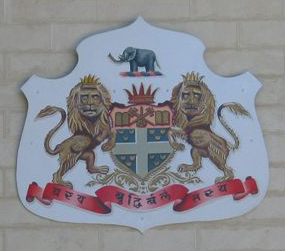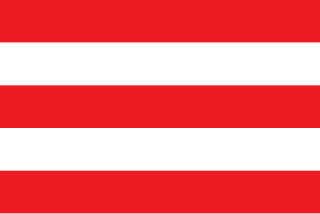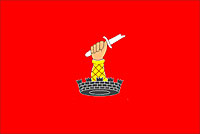
Panchmahal, also rendered as Panch Mahal, is a district in the eastern portion of Gujarat State western India. Panch-mahal means "five tehsils/talukas", and refers to the five sub-divisions that were transferred by the Maharaja Jivajirao Scindia of Gwalior State to the British: Godhra, Dahod, Halol, Kalol and Jhalod, Devgadh Baria. The district had a population of 2,390,776 of which 12.51% were urban as of 2001.

The Rajkumar College in Rajkot, Gujarat is one of the oldest K-12 institutions in India. RKC has a 28.656-acre campus in Rajkot. The foundation stone of Rajkumar College was laid in 1868. The institution was designed by Colonel Keatinge and was formally opened by the Governor of Bombay, H. B. Sir Seymour Fitzgerald, in 1870. The college was founded for the education of the princely order by the princes and chiefs of Kathiawad for their sons and relations.

Nawanagar was an Indian princely state in the historical Halar region, located on the southern shores of the Gulf of Kutch. It was ruled by the Jadeja Rajput dynasty and became a part of newly formed India. Its capital city was Nawanagar city, now known as Jamnagar. It had an area of 3,791 square miles (9,820 km2) and a population estimated at 336,779 in 1901. Its rulers, who use the title of "Jam Saheb" are of the same clan as the Rao of Kutch. They were entitled to a 13-gun salute. The state flag was a rectangular red flag with a white elephant, near and facing the hoist. During the British, the state was part of the Kathiawar Agency, within the Gujarat Division of Bombay Presidency.

Dahod district is a district of Gujarat state in western India. This largely tribal district is mostly covered by forests and hills.
Lunavada is a municipality in the Mahisagar district, formerly in the northern part of Gujarat state of India.

Sir Bhupinder Singh, was the Maharaja of Patiala and a cricket player. Singh's reign as Maharaja of the princely state of Patiala, in British India, lasted from 1900 to 1938. He was born in a Sidhu royal Jat Sikh family. During his reign, Singh was most noted for his extravagance, contributions to sports, and for being an ally to the British Raj. He was also a member of the Phulkian dynasty.

Maharajadhiraj Mirza Maharao Sri Sir Vijayarajaji Khengarji Sawai Bahadur, GBE was the ruling Rao of Kutch from 1942 to his death in 1948.

Colonel HH Maharajadhiraj Shri Maharaja Mahim Mahendra Maharao Raja Sir Umaid Singh II was the 18th Hada Chauhan ruler of the Princely State of Kotah from the year 1889 to 1940.

Brigadier HH Shri Maharajadhiraj Maharaja Mahim Mahendra Maharao Raja Sir Bhim Singh II Bahadur, KCSI was the last ruling Maharaja of the Hada Chauhan dynasty of the Princely State of Kotah from the year 1940 to 1947.

Sir Digvijaysinhji Ranjitsinhji Jadeja, known to some as the Good Maharaja, was the Maharaja Jam Sahib of Nawanagar from 1933 to 1966, succeeding his uncle, the famed cricketer Ranjitsinhji.

Bharatpur State, which is also known as the Jat State of Bharatpur historically known as the Kingdom of Bharatpur, was a Hindu Kingdom in the northern part of the Indian subcontinent. It was ruled by the Sinsinwar clan of the Hindu Jats. At the time of reign of king Suraj Mal (1755–1763) revenue of the state was 17,500,000 Gold coin per annual. The major architecture of this state include Lohagarh Fort and Deeg Palace.
Muli State was a princely state in subsidiary alliance with British India. It was ruled by the Parmar clan of the Rajputs.

The Chhota Udaipur State or 'Princely State of Chhota Udaipur', was a princely state with its capital in Chhota Udaipur during the era of British India. The last ruler of Chhota Udaipur State signed the accession to join the Indian Union in 1948. Chhota Udaipur shares a history with Devgadh Baria and Rajpipla as one of the three princely states of eastern Gujarat.

Lunavada State, also known as Lunawada State, was a princely state in India during the time of the British Raj. Its last ruler acceded to the Union of India on 10 June 1948.

The Baria State, also known as Bariya State, was one of the princely states of India during the period of the British Raj. It was under the Rewa Kantha Agency of the Bombay Presidency and had its capital in Devgadh Baria town of present-day Dahod district in Gujarat state.

HH Saramad-e-Raja-e-Hindustan Raj-Rajeshwar Raj-Rajendra Maharajadhiraj Shri Maharaja Sawai Sir Madho Singh II, was the Maharaja of the Princely State of Jaipur from the year 1880 until 1922. He was the adopted son of the previous ruler Sawai Ram Singh II, Maharaja of Jaipur.

Nava sudasana is a village in Satlasana Taluka, Mehsana district in the Indian state of Gujarat, India. The population of village is around 6500. The Aravalli Range passes through the Nava Sudasana. The village recently built a temple of their Kuldevi Harsiddhi Mataji.
Digvijaysinh Pratapsinhji Jhala was an Indian politician from Gujarat. He served as India's first environment minister in the central government.
Hansari was a village of Babina Block in Jhansi district, now evolved as a suburb of Jhansi District, Uttar Pradesh, India.















